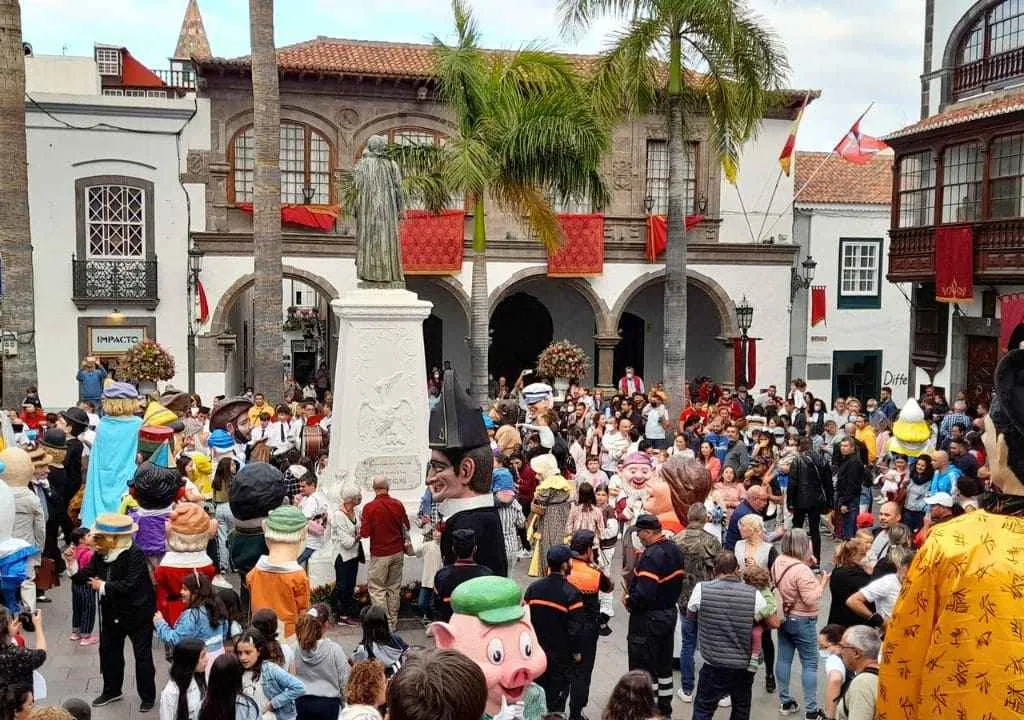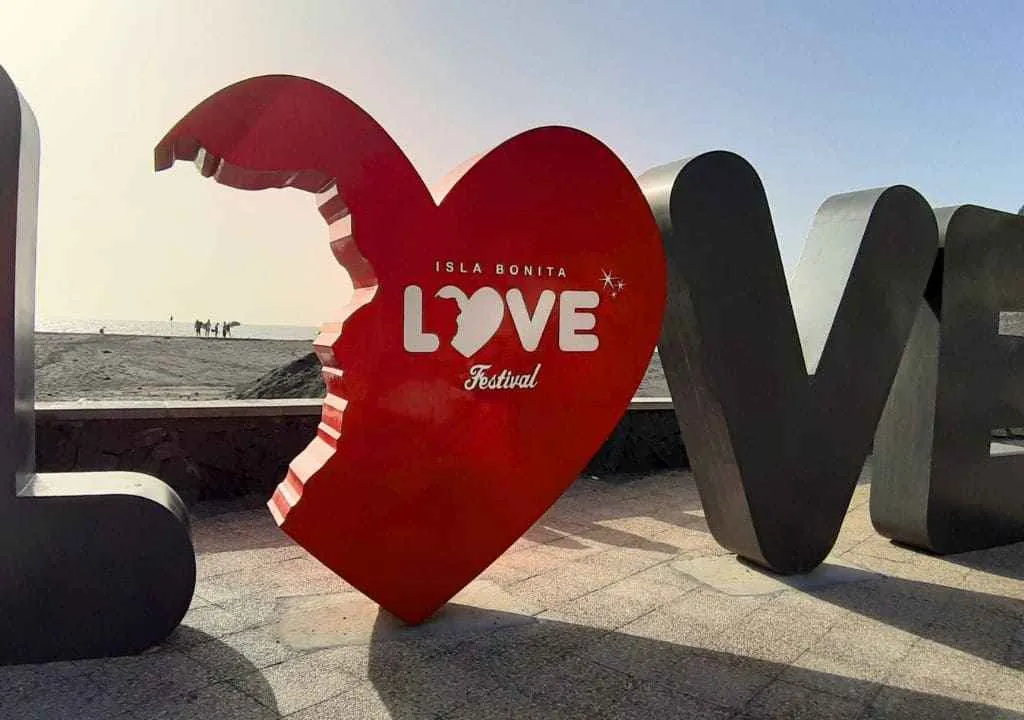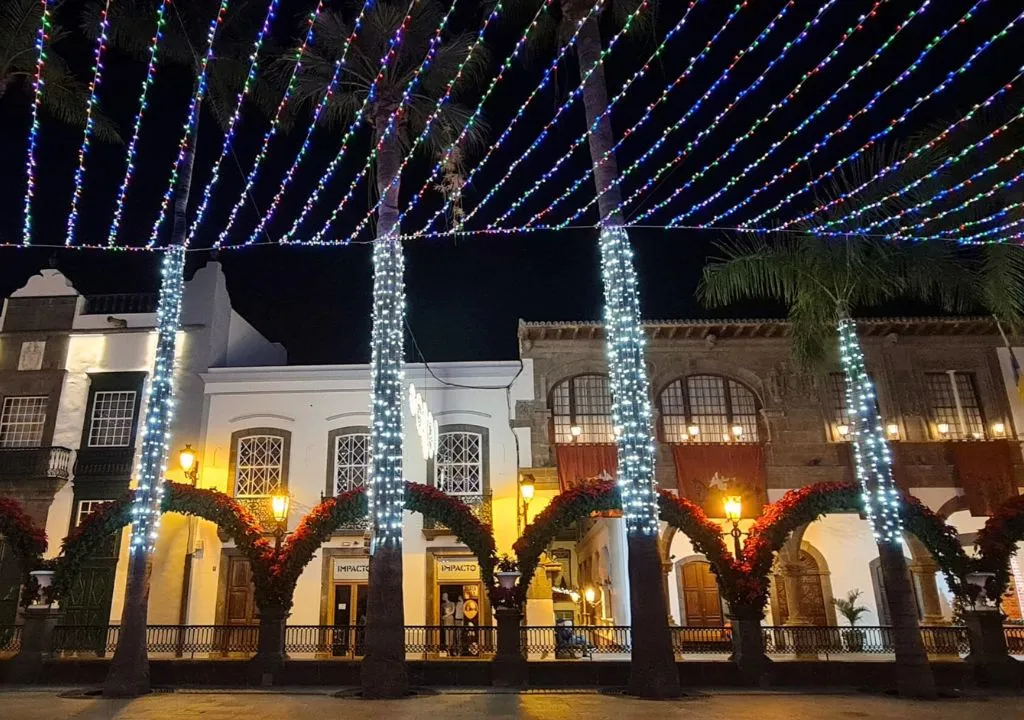Every May 3rd, Spain celebrates the Feast of the Cross, a centuries-old tradition with both religious and popular roots.
On La Palma, this day takes on a unique meaning: in addition to honouring the Cross, it also commemorates the conquest of the island and the foundation of Santa Cruz de La Palma in 1493 by Alonso Fernández de Lugo.
→ View Full Program of the May Festivities 2025 in Santa Cruz de La Palma
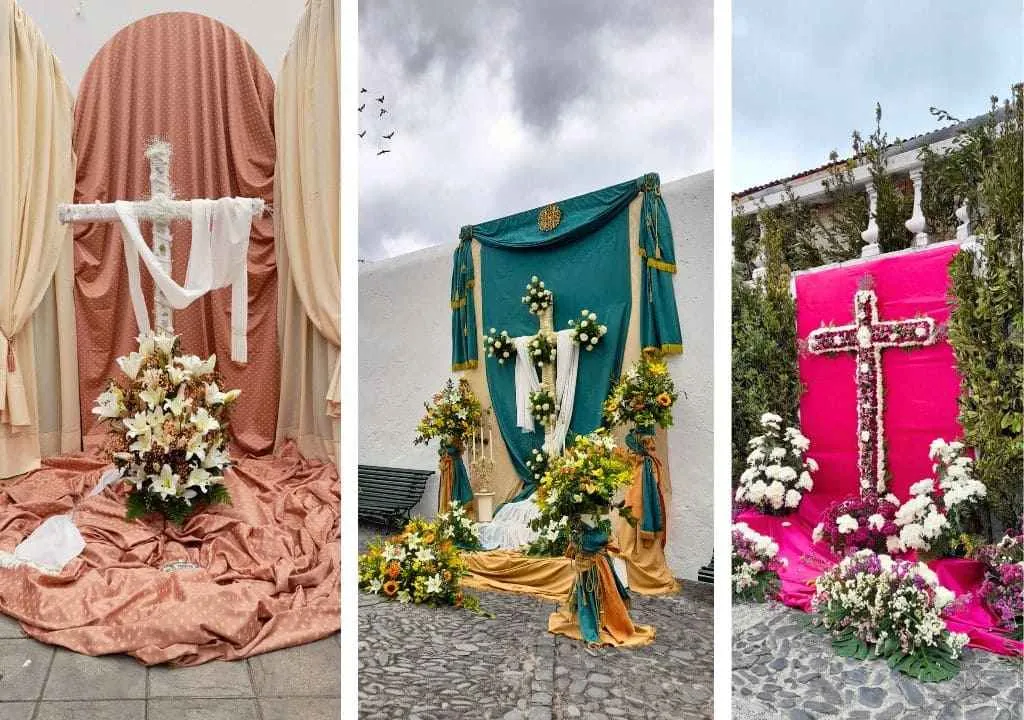
Essential Information about the Feast of the Cross
| Element | Detail |
|---|---|
| Date | May 3rd |
| Main municipalities | Breña Alta, Breña Baja, Santa Cruz de La Palma, Villa de Mazo |
| Distinctive elements | Decorated crosses, Mayos (handmade figures), Dance and Parade of Mascarones (the day before) |
| Activities | Mascarones parade, exhibitions, cultural and festive events |
| Special meaning | Coincides with the commemoration of the conquest and founding of the capital |
Crosses that Tell Stories
On the eve of the celebration, streets and old royal paths are transformed.
Residents work through the night, decorating the crosses with fresh flowers, colourful fabrics and jewels.
In the island’s main towns, especially in the historic centre of the capital, each neighbourhood strives to make its cross the most beautiful.
At dawn, a mosaic of ephemeral art fills the air with colour and fragrance, welcoming a day of joy and devotion.
The “Mayos”: Scenes that Come to Life
Next to the crosses, or even on balconies and rooftops, appear the Mayos, handcrafted figures that recreate scenes of local life, customs or even recent events.
In Santa Cruz, the most famous ones can be found in the San Telmo neighbourhood (Tres de Mayo and Morales streets) and La Alameda (Jameos and Jandía).
Each group is a small open-air theatre performance, full of humour, nostalgia and creativity.
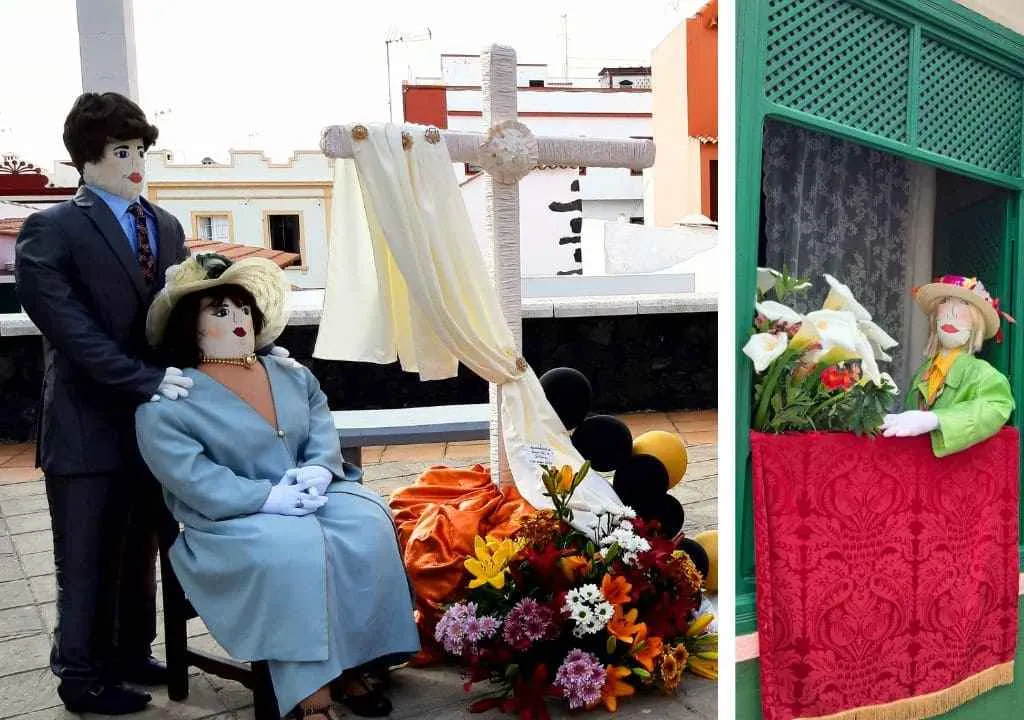
The Parade and the Dance of the “Mascarones”
On the afternoon of May 2nd, the streets come alive with the Parade of the Mascarones, which joyfully winds through the centre until reaching Plaza de España.
The Dance of the Mascarones is one of La Palma’s most beloved traditions and has a special connection with the island’s famous Dwarfs (Los Enanos).
Its documented origins date back to 1814, and since then it has accompanied both the Feast of the Cross and the Lustral Festivities.
Today, the parade features 52 figures: forty large-headed characters (cabezudos), six pairs of giants, and unforgettable characters such as the Biscuit (1935), the pair of giants created in 1940 by Félix Martín, the Luna de Valencia, which arrived from South America in the early 20th century, and several German figures from the Eilers & Mey workshop.
There are even playful nods to Disney classics, adding a touch of magic and laughter to the colourful procession.
